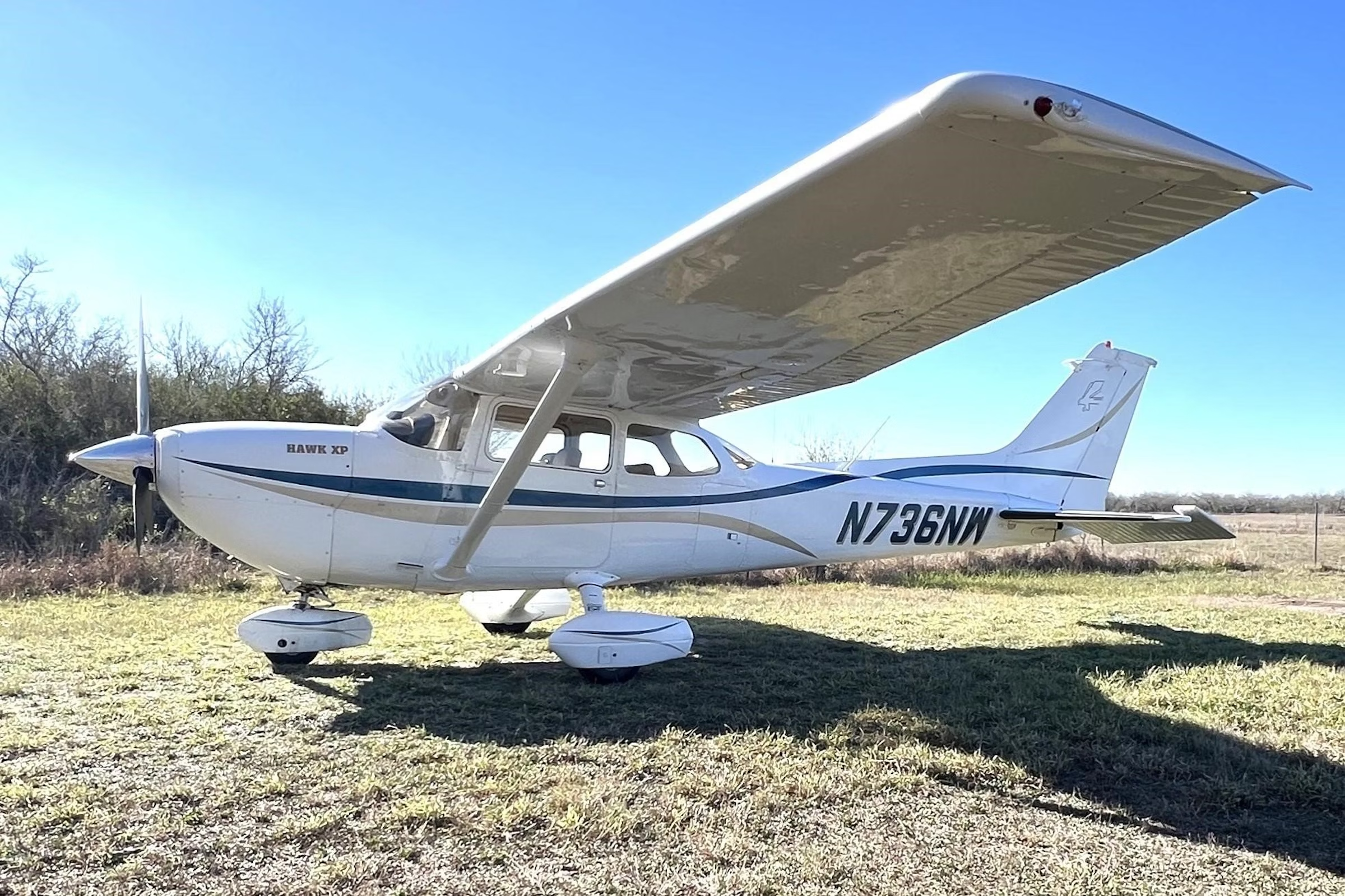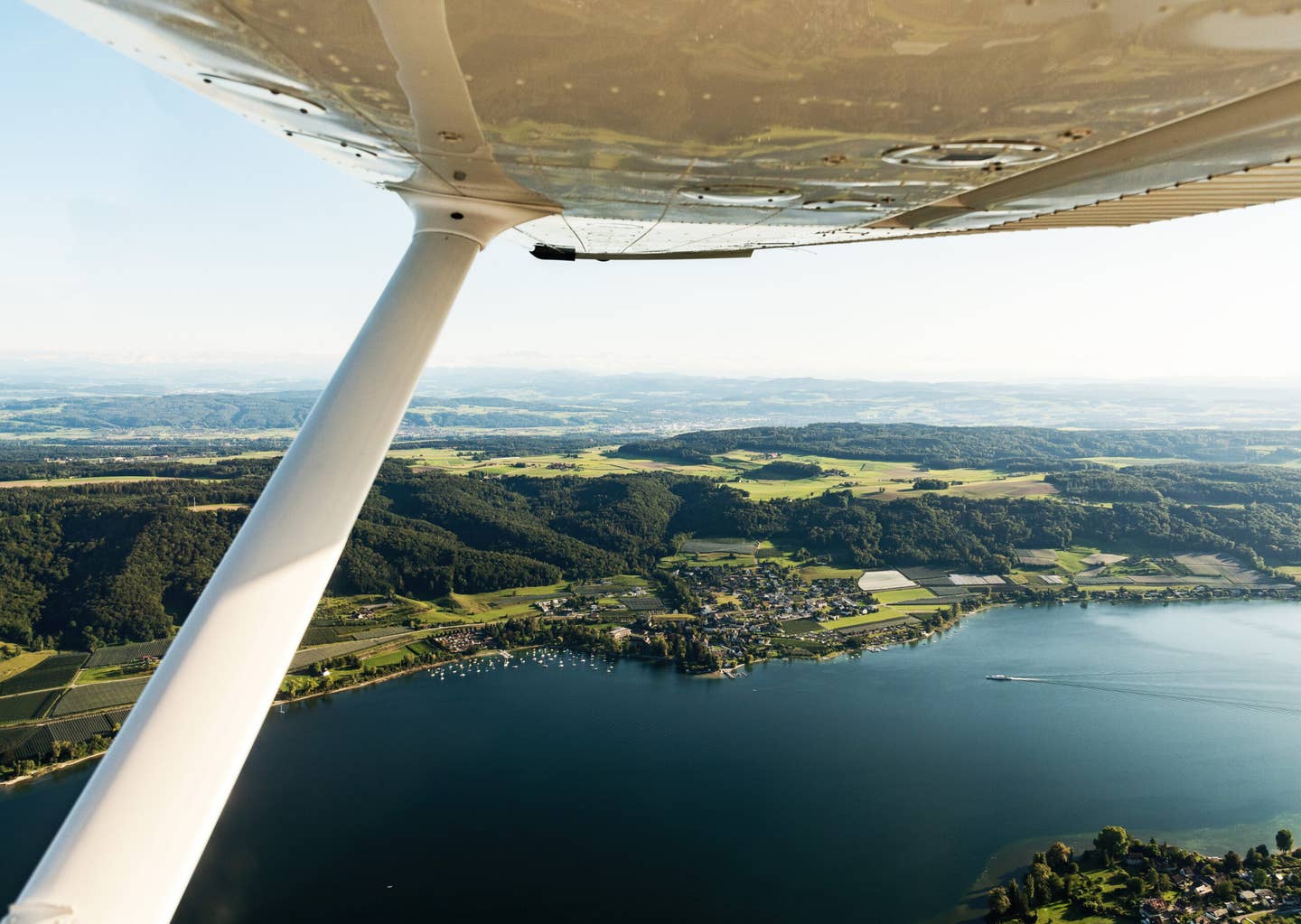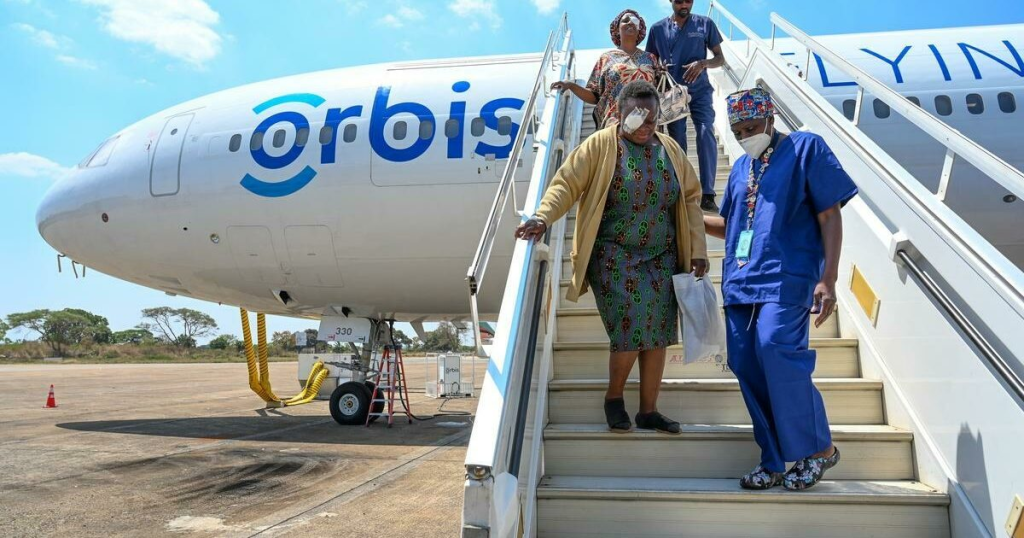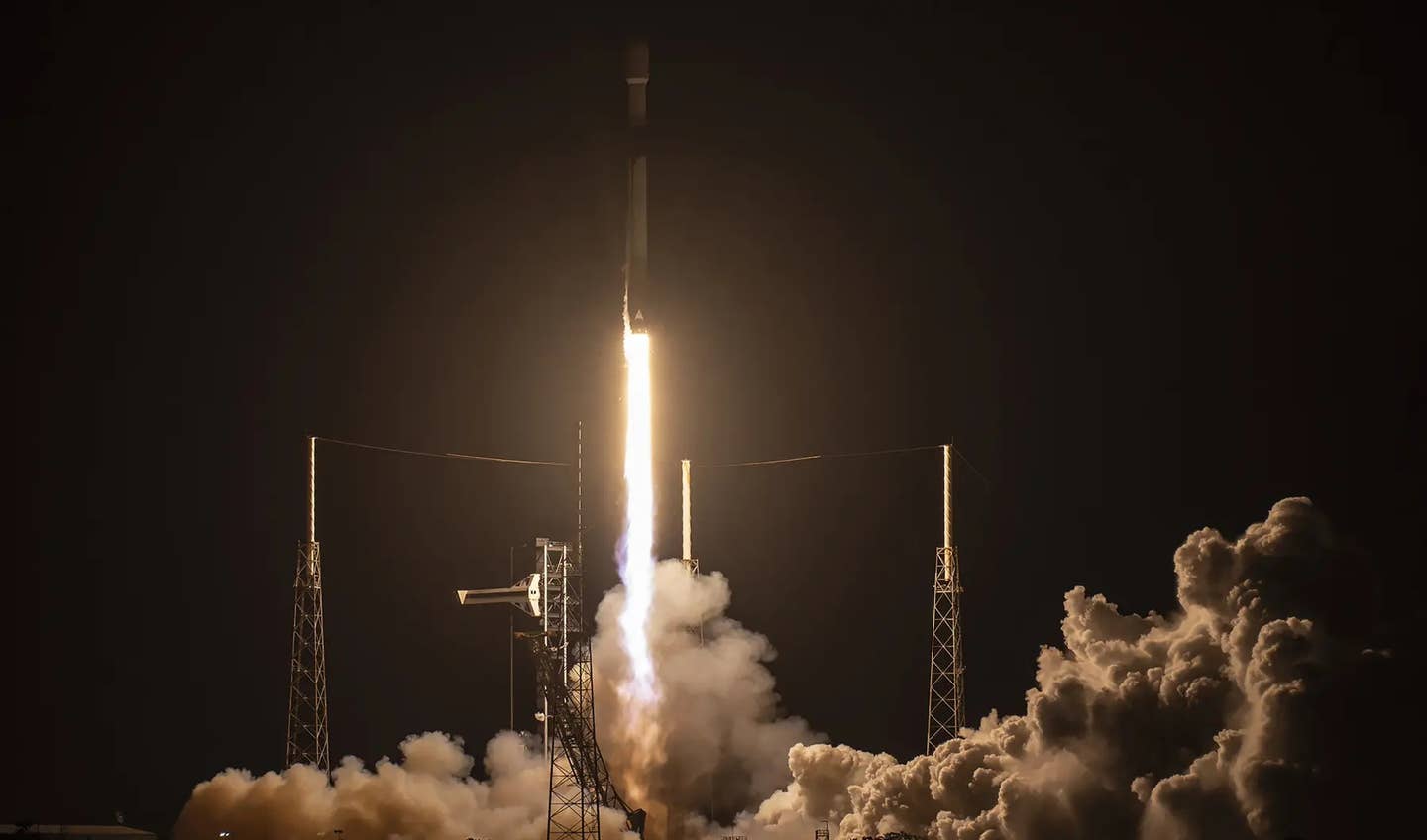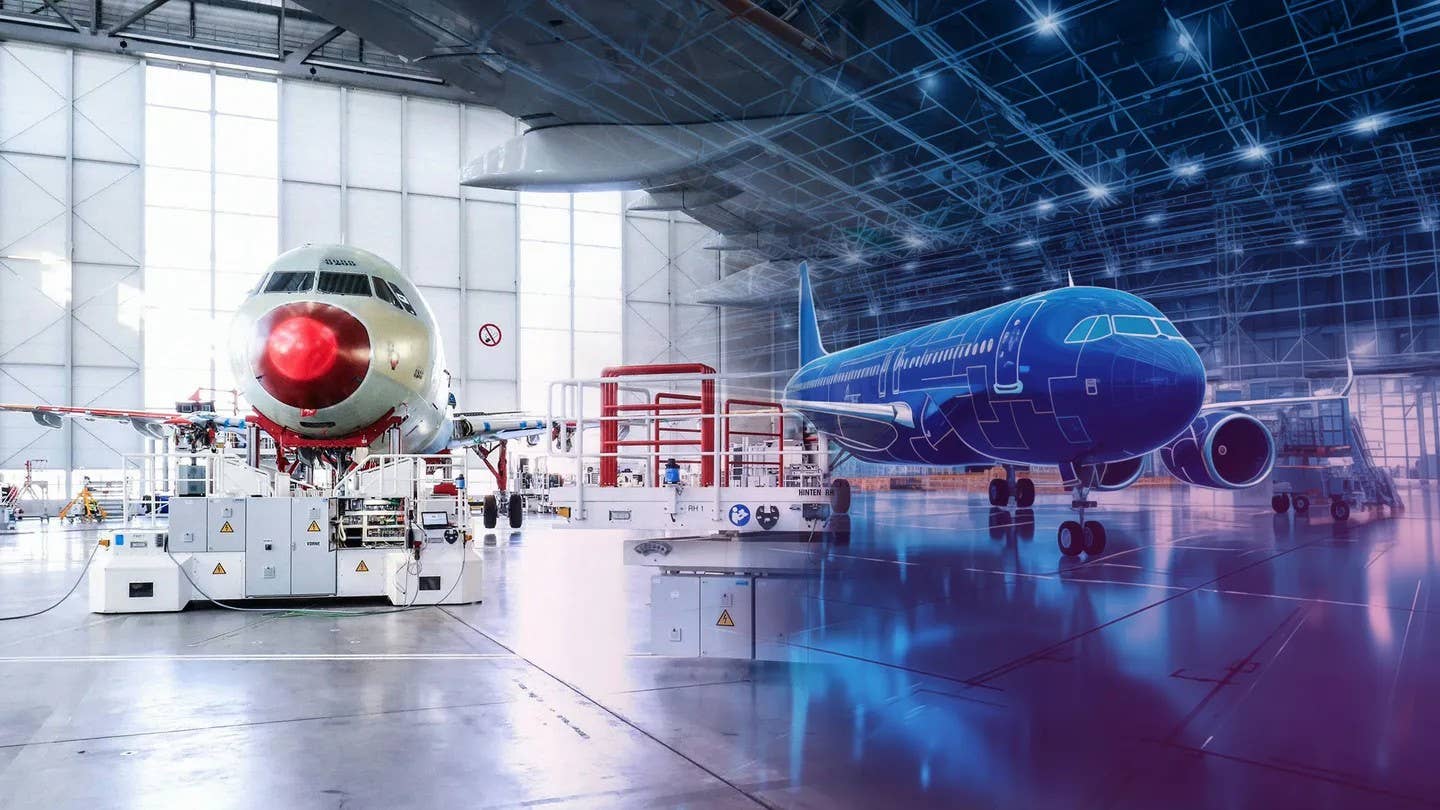
In January of last year, the nose baggage door of a Cessna CE-525 CitationJet opened during takeoff from Van Nuys Airport. Moments later, the jet crashed into an empty lot in a residential neighborhood just north of the airport, killing both pilots.
As you might expect at a busy airport, many people who knew something about airplanes watched the takeoff. Witnesses at midfield reported that the baggage door was closed as the airplane passed them; others near the departure end of the runway said that it was open and standing upright. A pilot holding short of the runway at an intermediate location, past midfield, reported that the Citation passed in front of him at about 100 feet, slow, and that the nose came down in what he interpreted as "an attempt to gain airspeed and control." He was on the right side of the Citation, and said nothing about the baggage door.
All witnesses -- they included the pilot of a 414 who took off right behind the Citation and maneuvered to avoid the fireball from the crash -- agreed that the jet, which reached an altitude of around 200 feet, seemed slow, and that it turned slightly left before leveling out and beginning to descend with the wings rocking slightly. It then banked sharply to the right, apparently having stalled, and crashed in a wings-vertical attitude.
Before the crash, one of the CitationJet's pilots told the tower that they wanted to return for landing, and the tower asked whether they wanted Runway 34, from which they were departing, or Runway 16. The answer was 34, and a few seconds later the tower cleared the crew to land the jet on any runway.
Some reported seeing objects fall from the baggage compartment and enter the left engine; but a thorough search turned up nothing between the runway and the crash site, and the two 1,900-pound-thrust Williams engines gave no evidence of foreign object ingestion. There was nothing, in fact, to indicate that the engines had not been operating normally, or that they were not able to produce full power, at any time during the accident sequence.
The wreckage was heavily fragmented and partially consumed by fire, but investigators were able to establish that the key lock on the left baggage door had been in the unlocked position. The baggage door is normally held shut by two mechanical latches, one at each end, and further secured by a central key lock. A warning light on the instrument panel illuminates if the key lock is not engaged, but it is the mechanical latches that actually hold the door shut.
Line personnel who had serviced the airplane before takeoff reported seeing the second pilot load some items into the nose baggage compartment and lower, but not latch or lock, the left-side door. The airplane was then towed away from the fuel pit for start. Because the line crew had to leave briefly to marshal out another airplane, no witnesses could describe the exact sequence of events as the two pilots boarded the airplane for a 20-mile positioning flight to Long Beach. One reported, however, that the senior pilot, a 72-year-old ATP (who held ratings for several Boeings as well as the L-1011 and the MD-11 and was the founder and owner of the charter service operating the Citation), was in the left seat. The right-seat pilot, 49, had 1,700 hours and was qualified as a second pilot for Part 135 flights. Line personnel reported that the delay before engine start -- about 10 minutes -- was unusually long.
The National Transportation Safety Board did not pretend to understand the precise sequence of events that led to the crash, which it attributed simply to failure to maintain flying speed. It identified as contributing factors the improper preflight inspection by the second pilot, his failure to secure the baggage door, and the "likely" distraction of the first pilot by the door flying open.
There was nothing to quarrel with in this finding of probable cause, but a number of aspects of the accident remained mysterious. Did the pilots not receive any warning of the unlocked door? In theory, at least, an unlocked baggage door would have lit up both an amber warning light and the master caution light on the annunciator panel. The master caution light could be reset by the pilots, but the door-specific warning light would remain illuminated. Warning lights could be tested -- a pre-takeoff checklist item -- and so a failure of the door warning light bulb could be identified if the master caution lit up without any corresponding specific warning light.
The NTSB implies that the first pilot was the pilot flying, although it does not identify the radio transmission as coming from the second pilot. If it was the highly experienced first pilot -- he had 38,000 hours and 800 in type -- who allowed the CitationJet to stall, then the accident highlights the fact that experience is not necessarily a protection against fundamental errors -- and there is no more fundamental error than failure to maintain flying speed.
But the problems began earlier. We don't know why the second pilot did not latch and lock the nose baggage door; perhaps he didn't have the key or, more likely, he thought the first pilot had something to put into the compartment as well. Presumably he made a mental note to re-check the door before boarding. Since we don't seem to know exactly what took place when the two men boarded the airplane, it's even possible that the first pilot actually did put something into the nose compartment and left the door ajar for the second pilot to close, while the second pilot assumed that the first had closed and locked it. Or perhaps the unlatched door slipped the mind of the second pilot, and the first pilot didn't notice it because he assumed the other had completed the preflight check. Since the left nose baggage door is no more than three or four feet from the cabin door, it must have looked closed; if it were visibly ajar, either the pilots or the lineman clearing the area for engine start would have noticed the discontinuity in the nose.
When they powered up, they probably got the warning light. How could they ignore it? One possibility is that they believed the door was latched, but not locked; the warning system was ambiguous in that respect, since it would be possible to have a warning light and still have a latched and airworthy door. Perhaps they thought that the structural latches were secure, and that for such a short flight there was no reason to worry about the key lock.
Fast forward to the takeoff. The airplane rotates, begins to climb, and the door pops open.
Now what?
The scenario is not unknown. Presumably some sort of testing was required while the airplane was being certified to demonstrate that an open door would not seriously destabilize the aircraft. In fact, the open door has very little effect on flying qualities. The NTSB enumerated several examples of cargo doors, front and rear, opening after takeoff. Some -- including one on a Van Nuys Citation 500 just two weeks before this fatal accident -- broke off the airplane. In one case the crew returned, landed, shut the door properly, and resumed their flight. In another case a crew saw a door-unlocked warning light illuminate for 15 seconds while the plane was still on the ground, and then go out; evidently more reassured than alarmed, they took off, only to have the door open at 50 feet. They landed without damage.
The Van Nuys accident was, apparently, the only one in which opening of a Citation's baggage door led to loss of the aircraft. Hence the NTSB's conclusion that the first pilot was "distracted" by the baggage door. Evidently, if he had not been distracted he would not have allowed the airplane to stall.
The word "distracted" suggests confusion and a lack of appropriate decision-making; but it is possible that the highly experienced first pilot was not distracted at all. The CitationJet was relatively light and capable of accelerating rapidly. Its failure to climb, interpreted -- wrongly -- by many soon after the accident as indicative of an engine having ingested some of the contents of the baggage compartment, strongly suggests a deliberate power reduction. But why would the pilot reduce power in this situation?
Perhaps because he knew that that other Van Nuys Citation, just two weeks earlier, had lost an open baggage door while returning to land. This is the sort of thing pilots talk about. The repairs would be expensive, and besides, the still costlier possibility of a breakaway door hitting an engine would have been discussed. He may also have been aware that in a couple of other instances jets had returned undamaged after a nose baggage door opened. So it is possible that he actually intended to keep the jet's speed down while returning to land. But a rapid transition from takeoff to slow flight is an uncommon maneuver and is never practiced; and it may be that he just got a little slower than he intended.
This article is based on the National Transportation Safety Board's report of the accident and is intended to bring the issues raised to the attention of our readers. It is not intended to judge or to reach any definitive conclusions about the ability or capacity of any person, living or dead, or any aircraft or accessory.

Sign-up for newsletters & special offers!
Get the latest FLYING stories & special offers delivered directly to your inbox

